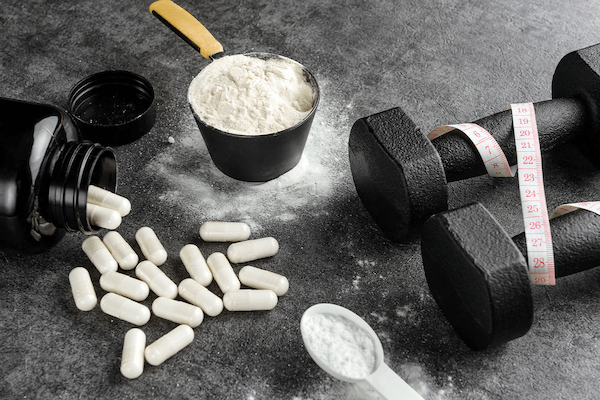A Complex Relationship
Alcohol: we love it, we hate it.
Sometimes referred to as "liquid courage," other times as the ruin of man, drinking has enabled both the best nights and the worst decisions—a contradiction truly unique to this powerful potion.
Drinking and general health can be a sensitive subject, as people’s relationships with substances are often personal and complex.
At MyFitFoods, we do not judge (we’re human too!) nor are we here to dictate your choices. Our mission is to equip you with the facts so that you can make informed choices related to your health journey.
Drinking and your Health: One size doesn't fit all
The effects of alcohol vary widely based on many factors, making it difficult to generalize its impact on health in the immediate and long term.
- How drinking affects individuals depends on sex, age, body composition, genetics, and overall health.
- The harmful effects of drinking depend largely on the quantity consumed in a sitting and the cumulative intake over time.
According to the NIAAA:
"In 2021, the average American aged 21 or older consumed 2.51 gallons of ethanol, which is equivalent to about 535.5 standard drinks."
This averages out to about 10 drinks per week. If this sounds like you, then this blog is for you. If you drink half this amount this blog is still for you. And if you rarely drink or don’t drink at all, stay tuned— because not only will you feel vindicated but there are plenty of valuable insights about your health too!
The Journey Begins: From Sip to Circulation
When alcohol enters the body, it is rapidly absorbed into the bloodstream via the stomach and small intestine. A healthy individual can circulate blood through the body in as little as 90 seconds, meaning the intoxicants effects can reach the brain within minutes. However, depending on the amount of food in the stomach the full effects can take between 15 and 45 minutes to be felt.
Key points about absorption:
- 20% is absorbed in the stomach, while 80% is absorbed in the small intestine.
- Alcohol penetrates all body tissues except bone and fat.
- The liver is responsible for processing the majority of toxins related to drinking
Shots to the Liver
After a quick journey through the stomach, small intestine, and into the bloodstream, approximately 95% of alcohol is ultimately processed in the liver. The remaining 5% is excreted through the skin, urine, and lungs (smelly breath).
The liver is the largest solid organ in the body and simply put we cannot live without the liver, nor could we handle any amount of drinking without it. The liver plays vital roles in:
- Producing bile for digestion.
- Metabolizing fats, proteins, and calories.
- Detoxifying harmful substances.
As the liver breaks down alcohol, it temporarily produces a compound named acetaldehyde
—a chemical even more toxic than the initial substance itself! The body rushes to convert it to a safer chemical, acetate, putting all other metabolic processes on hold to prioritize this conversion.
It is important to note that the liver processes alcohol at a consistent rate of one drink per hour. When consumption outpaces liver metabolism, blood alcohol content (BAC) increases, leading to further intoxication.
Metabolism on the Rocks
Metabolism is the chemical process that converts food into energy, sustaining essential functions like breathing, moving, and healing. With intoxicants in your system, your body prioritizes breaking this substance down over burning fat or processing other nutrients, resulting in effects such as:
- Increased fat storage
- Reduced calorie burning
- Disrupted hormone balance (which can lead to overeating)
Over time, this diversion of metabolic resources at the behest of processing alcohol often leads to weight gain. Weight gain specific to metabolized alcohol tends to accumulate in the abdominal area, affectionately (and appropriately) referred to as a beer belly.
If you want to explore abdominal weight loss solutions check out our blog on Belly Fat - link here!
How Drinking Can Tip the Scales
Not only does intoxication encourage poor food choices and impulsive late-night eating but it also prevents your body from effectively burning off those indulgent calories. It can take up to seven hours for the body to fully detoxify the alcohol. This prolonged metabolic disruption allows all that junk food to sit in your system like a traffic jam.
Furthermore, we know drinking is frequently referred to as liquid calories or empty calories, here are some quick caloric stats to keep in mind:
- 12 oz beer – 150 calories
- 5 oz glass of wine – 120 calories
- 4 oz margarita – 170 calories
— And just to provide you with a visual: calorically speaking, the sum total of these three drinks would approximate to two Oreos (140 cal.), one Whataburger Texas Toast (160 cal.), five Ritz crackers (80 cal.), and one small hard-boiled egg (60 cal.).
Still Tippin’ (the scales)
To make matters worse drinking disrupts appetite regulation through multiple chemical mechanisms. We already know intoxication increases cravings for junk food by impairing decision-making, leading to the drunk munchies, or “drunchies” if you will.
But did you know alcohol also triggers the release of ghrelin, a hunger hormone in the gut while simultaneously suppressing satiety hormones?
This chemistry coupled with the impulsive tendencies often result in excessive calorie intake and poor dietary choices. The short and long term effects of which need not be mentioned again.
Last Call: How Drinking Drains Your Body and Disrupts Sleep
Beyond stunted metabolism, poor eating, and a strained liver, alcohol depletes the body of vital fluids and electrolytes due to its diuretic properties, leading to dehydration. This can result in frequent nighttime trips to the bathroom, disrupting sleep. However, more significantly, this affects GABA neurotransmitters, which regulate sleep by reducing excitability. By increasing GABA, alcohol inhibits REM sleep, leading to poor rest, decreased recovery, and a compromised tomorrow.
This perfect storm of dehydration, junk food and poor sleep is in large part what forms the dreaded hangover.
The Long, Strange Trip of Alcohol in the Body
We’ve followed alcohol’s journey from the stomach to the bloodstream, into the liver, and through the metabolic process—disrupting sleep, increasing fat storage, and overloading key bodily functions along the way.
Alcoholic beverage consumption at the average American rate places continuous strain on the body, contributing to chronic health conditions, weight gain and compromised energy.
At MyFitFoods, we believe a balanced, enjoyable life is the most sustainable approach to health, and drinking can certainly have its place in moderation. However, if you are on a health journey it's important to be aware that these habits may be holding you back.
Consider These Tips When Drinking:
- Pace yourself: The liver processes only one drink per hour.
- Stay hydrated: Drink water and replenish electrolytes to counteract dehydration.
- Make mindful food choices: Avoid impulse junk eating while your metabolism is disrupted.
- Avoid consecutive nights drinking: Give your body time to fully recover between drinking activities.
Ready to Take Control of Your Health?
Regardless of what you did last night, MyFitFoods is committed to supporting your health and wellness goals with nutrient-dense, ready-to-eat meals that fuel your body and facilitate recovery the right way.






